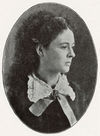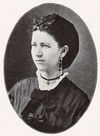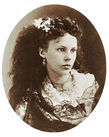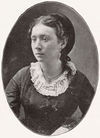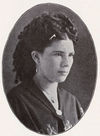Difference between revisions of "Founders"
| (7 intermediate revisions by 2 users not shown) | |||
| Line 1: | Line 1: | ||
| − | “On a little wooden bridge spanning a small stream that flows through the northeastern corner of the campus, two college girls one day held a schoolgirls’ conversation out of which grew the Kappa Kappa Gamma Fraternity,” Monmouth College President Thomas | + | <metadesc>The history of the founders of Kappa Kappa Gamma.</metadesc> |
| + | “On a little wooden bridge spanning a small stream that flows through the northeastern corner of the campus, two college girls one day held a schoolgirls’ conversation out of which grew the Kappa Kappa Gamma Fraternity,” Monmouth College President Thomas H. McMichael, who served as Monmouth College president from 1903-1936, once recalled. The idea of Kappa Kappa Gamma is said to have been conceived in a conversation between two college women, Mary Louise (Lou) Bennett and Hannah Jeannette (Jennie) Boyd, on a wooden bridge over a stream on the Monmouth College campus in the late 1860s. | ||
Lou and Jennie began to seek "the choicest spirits among the girls, not only for literary work, but also for social development", beginning with their friend Mary (Minnie) Moore Stewart. Minnie, Jennie, and Lou met around 1869 in the Amateurs des Belles Lettres Hall, a literary society of which the women were active members when they first decided to form a new society. | Lou and Jennie began to seek "the choicest spirits among the girls, not only for literary work, but also for social development", beginning with their friend Mary (Minnie) Moore Stewart. Minnie, Jennie, and Lou met around 1869 in the Amateurs des Belles Lettres Hall, a literary society of which the women were active members when they first decided to form a new society. | ||
| Line 6: | Line 7: | ||
It was after their initial talk, they recruited three additional women including Anna Elizabeth Willits, Martha Louisa (Lou) Stevenson, and Susan (Sue) Burley Walker, to join in founding the fraternity. | It was after their initial talk, they recruited three additional women including Anna Elizabeth Willits, Martha Louisa (Lou) Stevenson, and Susan (Sue) Burley Walker, to join in founding the fraternity. | ||
| − | [[File:AnnaElizabethWillits.jpg|100px | + | [[File:AnnaElizabethWillits.jpg|100px|link=Anna_Elizabeth_Willits|Anna Elizabeth Willits]] [[File:HannahJeannetteBoyd.jpg|100px|link=Hannah_Jeannette_“Jennie”_Boyd|Jennie Boyd]] [[File:MarthaLouisaStevenson.jpg|109px|link=Martha_Louisa_“Lou”_Stevenson|Lou Stevenson]] [[File:MaryLouiseBennett.jpg|100px|link=Mary_Louise_“Lou”_Bennett|Lou Bennett]][[File:MaryMooreStewart.jpg|100px|link=Mary_“Minnie”_Moore_Stewart|Minnie Stewart]] [[File:SusanBurleyWalker.jpg|98px|link=Susan_Burley_Walker|Sue Walker]] |
| − | [ | + | [https://wiki.kkg.org/index.php?title=Category:Founders&action=edit&redlink=1 Media related to the Founders] |
Latest revision as of 14:54, 28 August 2017
“On a little wooden bridge spanning a small stream that flows through the northeastern corner of the campus, two college girls one day held a schoolgirls’ conversation out of which grew the Kappa Kappa Gamma Fraternity,” Monmouth College President Thomas H. McMichael, who served as Monmouth College president from 1903-1936, once recalled. The idea of Kappa Kappa Gamma is said to have been conceived in a conversation between two college women, Mary Louise (Lou) Bennett and Hannah Jeannette (Jennie) Boyd, on a wooden bridge over a stream on the Monmouth College campus in the late 1860s.
Lou and Jennie began to seek "the choicest spirits among the girls, not only for literary work, but also for social development", beginning with their friend Mary (Minnie) Moore Stewart. Minnie, Jennie, and Lou met around 1869 in the Amateurs des Belles Lettres Hall, a literary society of which the women were active members when they first decided to form a new society. These three women, driven by their passion and convictions moved forward to inspire their shared vision with other women whom they believed to hold their same values and be of outstanding character.
It was after their initial talk, they recruited three additional women including Anna Elizabeth Willits, Martha Louisa (Lou) Stevenson, and Susan (Sue) Burley Walker, to join in founding the fraternity.
